Faces on a white wall in Central Fresno look south, beyond the nearby 180 freeway, toward their ancestral home. Canvas, paint and glitter over painted stucco and brick become the medium depicting those who grew up with a foothold in two homelands, while the QR codes bring their stories to life.
Nearly 3,000 miles away at the corner of Central Ave. and Jefferson Street in Brooklyn, New York, the same faces and stories fill in a painted black brick wall. The pair of murals is part of the “U.S. Childhood Arrivals Mural Project,” a bi-coastal effort that depicts nearly two dozen faces and tells their stories.
“This bi-coastal mural project asserts that this generation are not shadows or statistics, they are human beings with names, faces and dreams worthy of protection and recognition,” Fresno State alumna Dr. Lizbeth De La Cruz Santana, assistant professor of Chicano/a/x studies at Baruch College in New York City, said in a video highlighting the project.
The images were initially painted on canvas with the community’s help at several locations, including the Chicano Youth Center, My Homies Kitchen and the Dream Centers at Reedley College and Fresno City College. Members of the community, along with a few of Santana’s students from New York, also helped glue the large canvas sections to the wall at the corner of Fresno’s Fulton Street and Madison Avenue, just south of Belmont Avenue, affixing the mural for the next 10 years.
“The U.S. Child Arrivals Mural Project has fulfilled its goal of amplifying the voices of current and former undocumented youth through community-engaged art and digital storytelling grounded in ethical and participatory methodologies,” Santana said. “The project integrated personal narratives to illustrate the experiences of U.S. childhood arrival migrants who enter the U.S. as minors and have lived in this country with the precarity of deportation.”
The mural was installed on June 15 – 15 years after the Deferred Action for Childhood Arrivals (DACA) program was created through an executive order of President Barack Obama. It received wide coverage from local and national media.
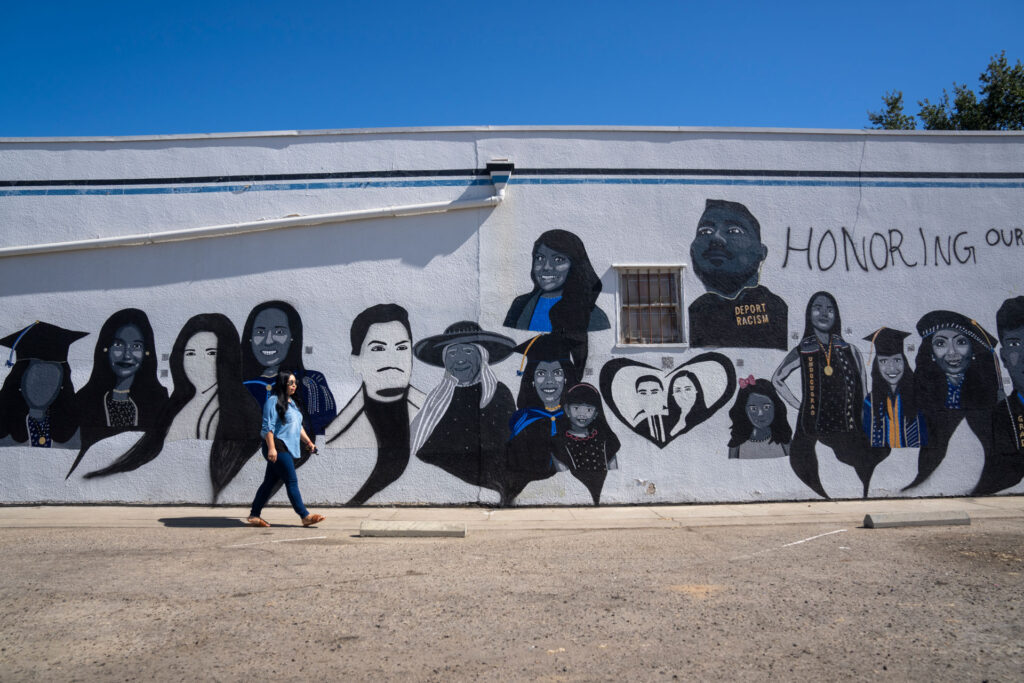
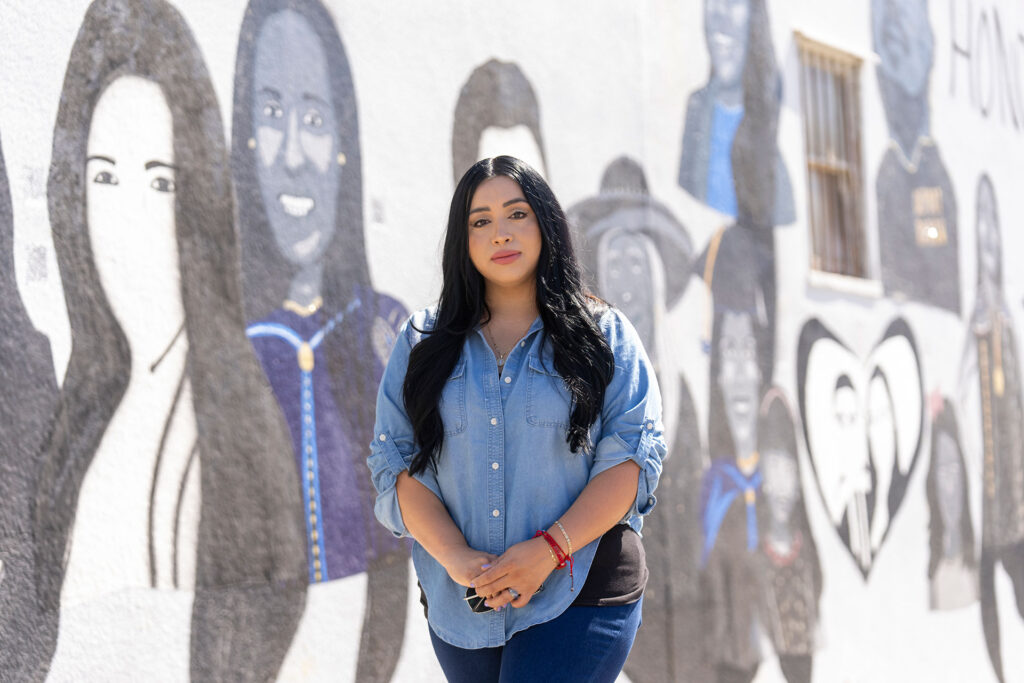
The woman behind this powerful project traces her artistic activism back to her own cross-border childhood and her time at Fresno State.
Born in the United States, Santana’s childhood was split between Compton, California and Jalisco, Mexico. When she was 15 years old, her family moved to Fresno, and she attended Hoover High School. With the focus of becoming a teacher, she enrolled at Fresno State.
Reflecting on her time at Fresno State, Santana said the “Spanish American Testimonio” course had a profound impact on her path in life.
“That class really pushed me to start thinking about doing an honors thesis,” Santana said. “I did the honors program, which I recommend to my friends who are at Fresno State.”
That course was taught by Dr. Gloria Medina-Sancho, professor of Spanish, who also became her faculty adviser as a graduate student and a close friend and mentor later in life.
“She helped me understand the importance of the first-person voice and how people are creating their own materials and how they express their experiences.”
During Santana’s time in Mexico, she absorbed the language and culture, but something was missing from her family’s story.
“I realized that my family never really talked about their migration stories,” Santana said. “We know our family members go, especially the males migrate, but we don’t talk about why.”
Like many families in California, Santana’s grandparents were farm laborers and part of the Bracero Program, a series of diplomatic accords that permitted Mexican men to work legally in the United States on short-term labor contracts between 1942 and 1964. Millions of braceros would cross the border into the United States to work, then return to Mexico when the job was complete. As the oldest in the family, Santana’s father also migrated back and forth for economic reasons.
The passion for first-person narratives inspired Santana to pursue a career beyond the teaching certificate and continue her journey in higher education. The focus on personal narrative would also prove crucial to her later work.
Santana received her bachelor’s and master’s degrees in Spanish Latin American literatures and cultures from Fresno State, and her doctoral degree from UC Davis in the same subject.
In November 2016, having recently received her master’s from Fresno State and pursuing her doctorate, Santana found herself at the Playas de Tijuana. The beach is like many on the west coast of North America, with one defining feature: a steel and barbed wire international border wall.
Santana recalled her first impression, “It was like abstract art. I saw rainbows, flowers and hearts everywhere.”
But it was a large mural of an upside-down U.S. flag that caught her attention and showed her the potential of using the wall as a canvas.
“I learned about deported veterans through that work, and then I saw the names, and I met many of the veterans while I was in Tijuana,” Santana said. “So for me it’s like, wow, this project did it for me, showing me that this is a route you can take to tell these stories.”
She began reflecting on the negative stereotypes born out of the idea the border is a violent place and the perceived necessity of a wall.
Around that time, Santana became involved with the Humanizing Deportation Project at UC Davis, which enables migrants to share their stories from their own perspective through video.
The combination of her family, education and lived experience sparked an idea for her doctoral dissertation that would gain international recognition: the Playas de Tijuana Mural Project. The mural depicts the faces of deported U.S. child arrivals and includes QR codes that link those images to videos of their stories. The project began in 2019 and was completed in 2021.
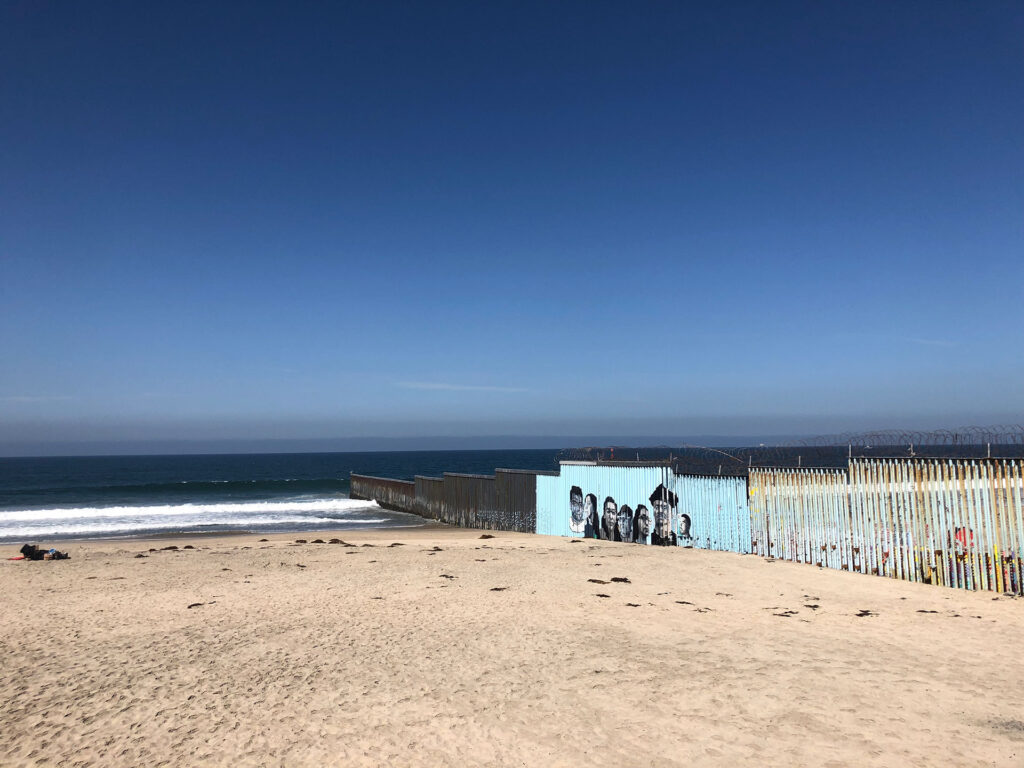
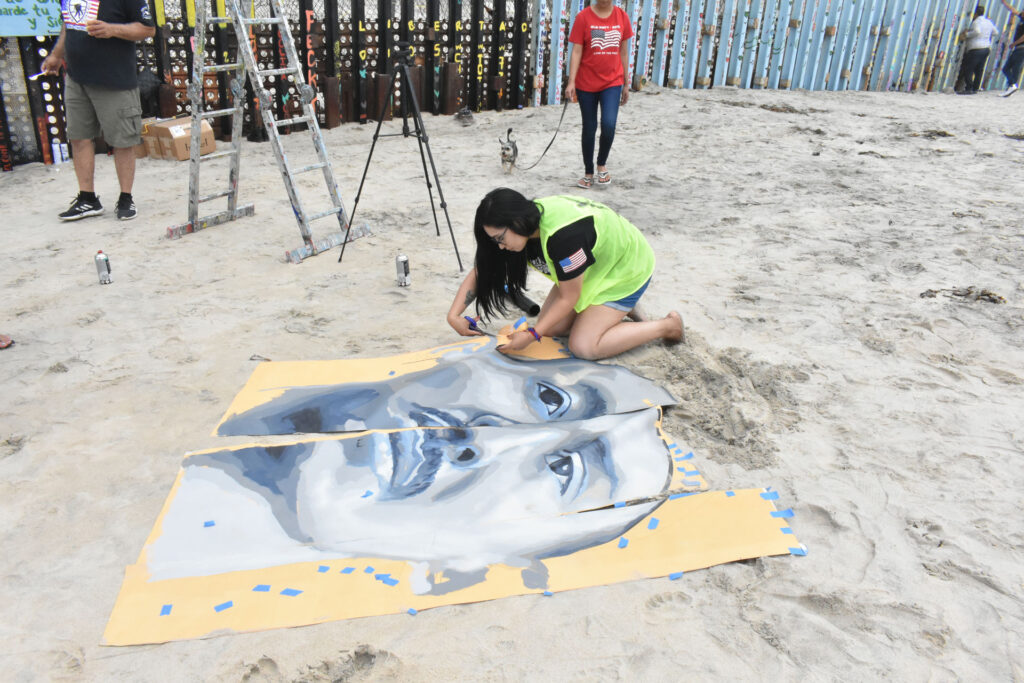
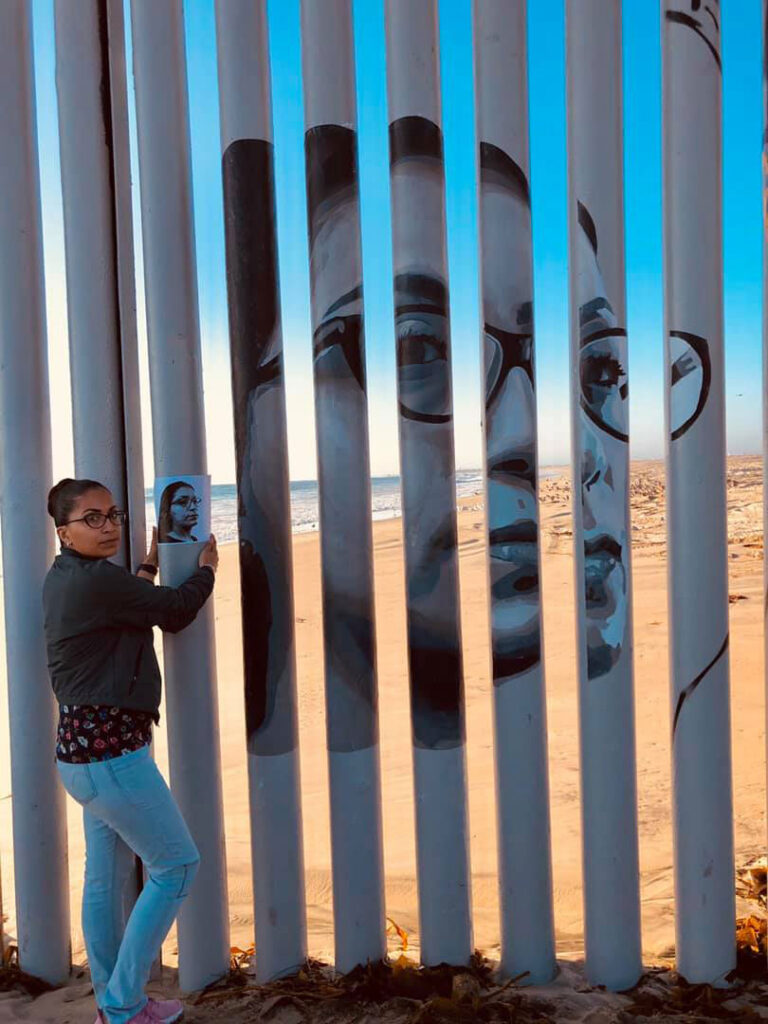
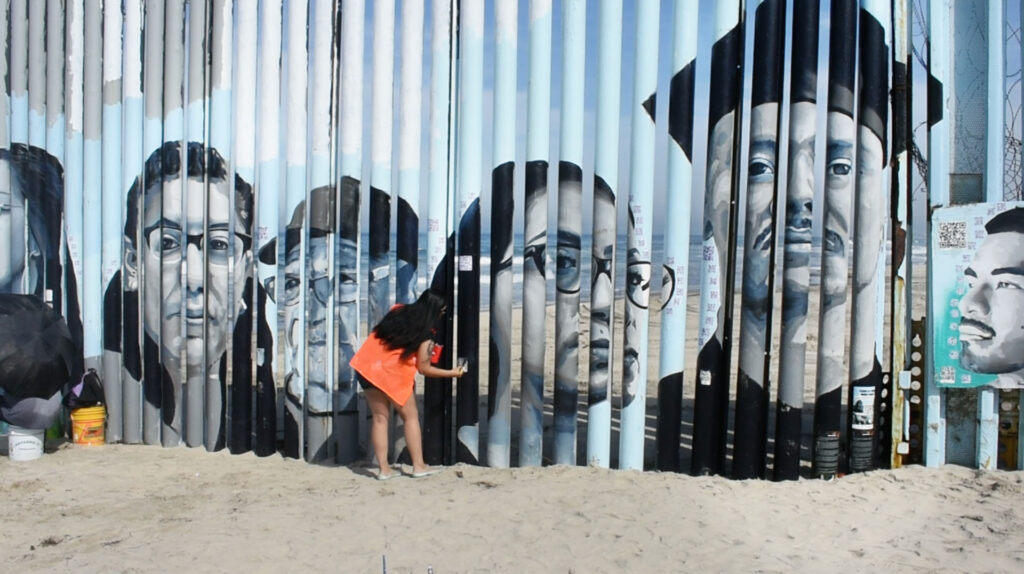
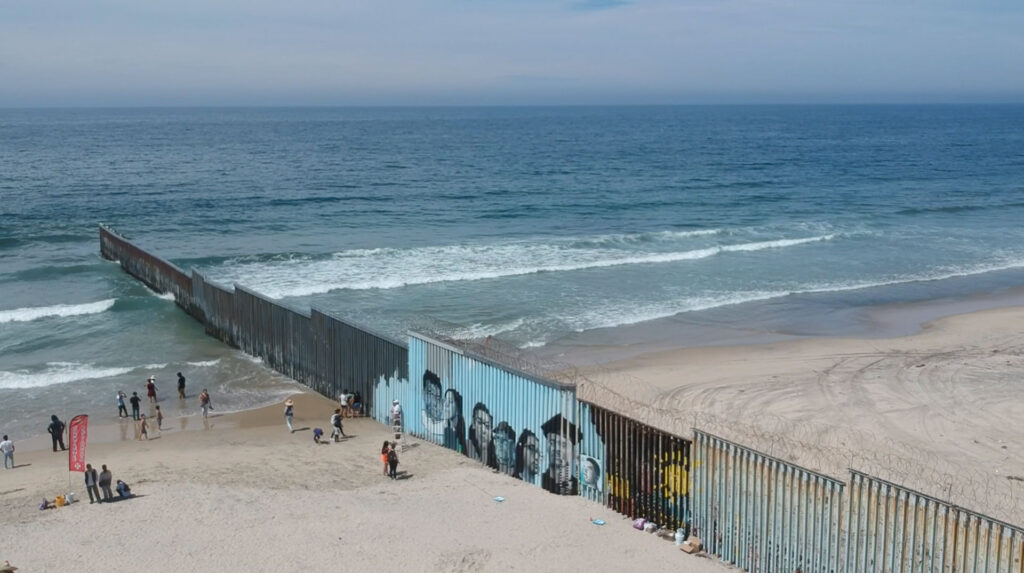
The Playas de Tijuana Mural Project launched a series of murals and exhibits that utilized art, along with digital storytelling, to raise awareness. These include the “El Paso Del Norte Mural Project” in Ciudad Juárez, Mexico; the “Deported Veterans Diaspora Mural Project” adjoining her original mural on the border wall in Tijuana and now the pair of “U.S. Childhood Arrivals” murals in Brooklyn and Fresno.
The same process is used to create the murals. First, Santana works with photographs provided by the storytellers to digitally draw their portrait by hand on an iPad.
The image is then projected onto a thin canvas, and her students and volunteers carefully outline the figures. From there, a paint-by-number process is used to carefully fill in the greyscale faces. In the “U.S. Childhood Arrivals” murals, small amounts of color were added to draw focus to certain elements. Once painted, the images are cut from the canvas and glued to the wall with the help of her students and community members.
In January, Santana will host an immersive exhibit at Arte Americas in Fresno focused on her mural projects. Additionally, she is working to complete a documentary on the Playas de Tijuana Mural Project, plans to collaborate with mural participants to co-write a book, and is coordinating other mural projects.


